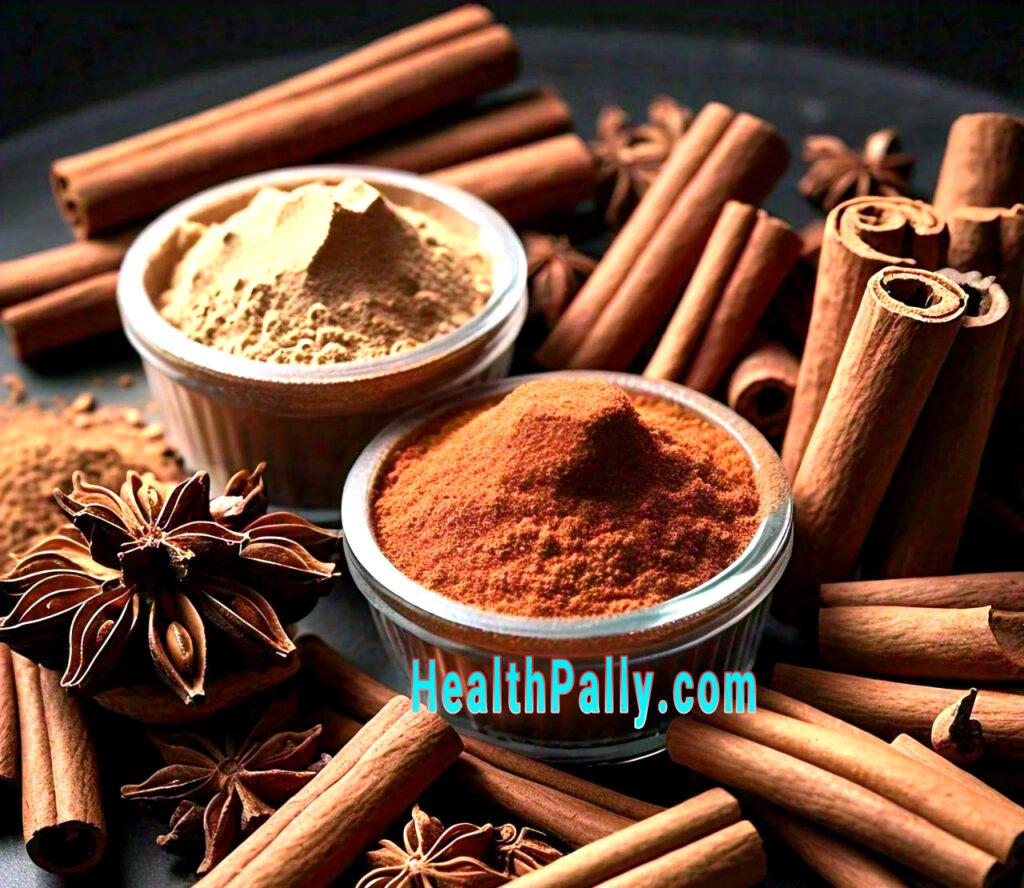Types of Cinnamon
There are some differences in cinnamon.
The cheap cassia cinnamon is full of kumarin and usually comes from Indonesia.
Kumarin is a secondary plant substance that can damage the liver if ingested too much.
Especially in the usual household cinnamon, the quantities of kumarin can vary significantly, which is why Cassia cinnamon should be used with caution.
In Ceylon Cinnamon, however, the proportion of Kumarin is much lower and therefore this it is recommended for the Christmas bakery.
If Cassia cinnamon is used, children should take a maximum of 3 and adults should take a maximum of 15 cinnamon stars per day.
The Cinnamon rods can be identified by the printing of the packaging and on the other by the appearance.
While on Cassia cinnamon is not apparent where it comes from, this is usually always on the packaging of Ceylon cinnamon, that it is Ceylon cinnamon.

But the two types of cinnamon can also be distinguished from each other.
The Cassia cinnamon, for example, has only a thicker layer of cinnamon that has been rolled.
In Ceylon Cinnamon, on the other hand, there are many thin layers that are very fine.
Due to the thickness of the individual layers, it is clearly identifiable.
If the cinnamon is ground, however, the varieties cannot be kept apart.
Therefore, it is always better to use cinnamon sticks to ensure that the proportion of kumarin is not too high and to be able to eat the pastries or the food without hesitation.
Ingredients of Ceylon cinnamon
Especially the bark of the cinnamon tree is suitable for medical purposes because of these essential oils are obtained.
The Ceylon cinnamon can support many ailments and stimulates digestion.
The quality of the essential oil of Ceylon cinnamon is determined by the European Pharmacopoeia.
The bark of the Ceylon cinnamon contains mainly essential oils such as cinnamon aldehyde, diterpene, slime, eugenol and oligomers proanthocyanidins.
Cinnamon Aldehyde: This is the main ingredient of Ceylon cinnamon and gives it the aromatic fragrance. But it’s not just the smell that makes cinnamon aldehyde. Because various proteins can also be influenced by cinnamon.
Cinnamon also stimulates the digestive juices and can stimulate the digestion as well as the appetite.
The substance can also have a manifold effect against micro-organisms and should therefore not be consumed in too high quantities.
Diterpene: Diterpene occur in numerous plants and have a bacterial inhibitory effect.
In addition, they should also work anticarcinogenic and can therefore be used in cancer support.
Slime substances: Mucus play a major role in Naturopathy. But they are also indispensable in standard medicine.
Among other things, they have a soothing effect, anti-inflammatory as well as immune stimulation to the organism.
This is why they are mainly used for complaints in the gastrointestinal tract as well as for persistent coughing.
Eugenol: Even if this substance is present only in small quantities, it can help to kill bacteria and fungi that are in the digestive tract.
The essential oil eugenol is therefore of great importance especially for the gastrointestinal tract.
Oligomers proanthocyanidins (OPC)
OPC is known mainly from grape seed extract. This substance has an antioxidant effect and can prevent cardiovascular disease and, on the other hand, can regenerate the skin more quickly and prevent cell damage.
Ceylon Cinnamon does not have a lot of ingredients, but these can help and relieve many complaints.